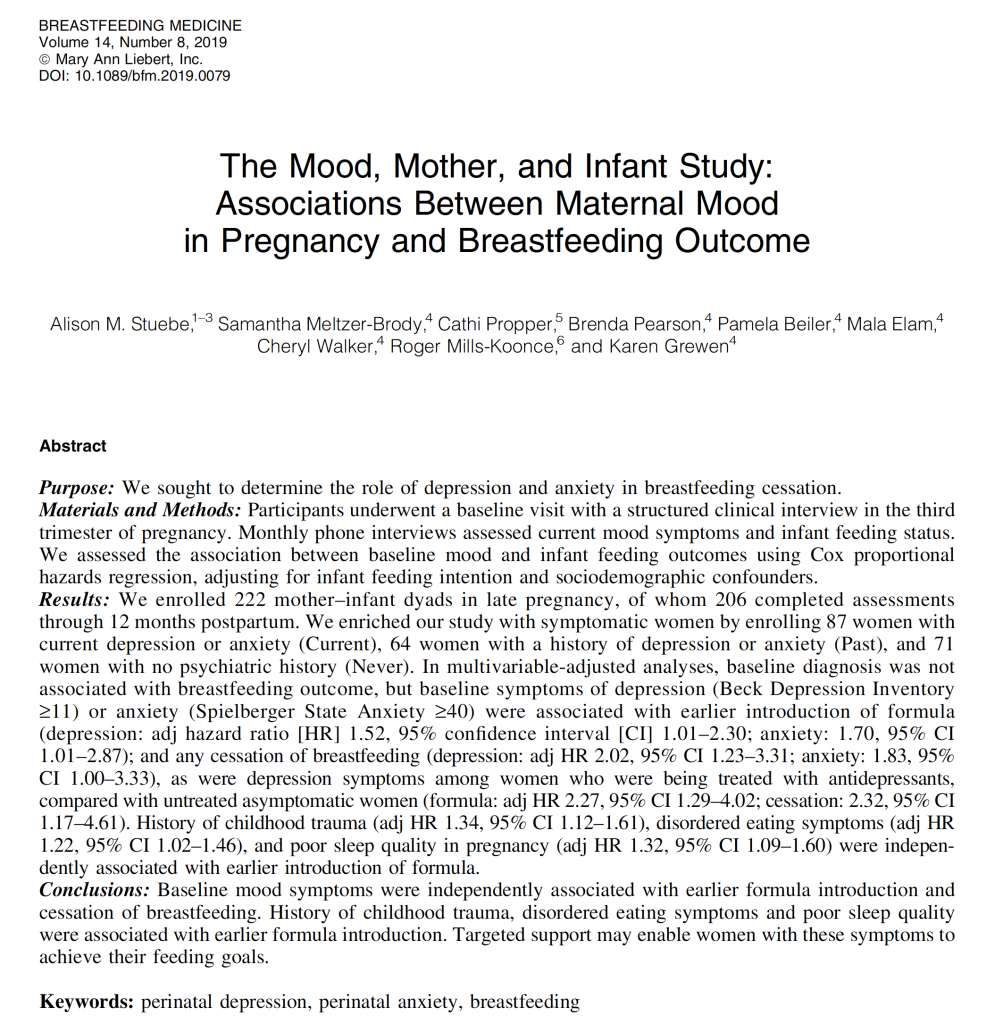
W Roger Mills-Koonce, Karen Grewen, Nisha Gottredson O’Shea Brenda Pearson, Chelsea Grace Strange, Samantha E Meltzer-Brody, Jerry Dolph Guintivano, Alison M Stuebe
Background: Perinatal depression affects >400,000 mother-child dyads in the United States every year and is associated with numerous adverse maternal and child developmental outcomes. Previous research implicates the dysregulation of oxytocin and the hypothalamic-pituitary-adrenal (HPA) axis functioning in mothers and children as potential mechanisms mediating or moderating the transmission of risk associated with maternal depression.
Objective: The Mood, Mother and Child study will examine the psychobiological sources of risk and resilience within mother-child dyads affected by maternal depression. This manuscript describes (1) the study rationale and aims, (2) the research design and procedures and how they were altered in response to the COVID-19 pandemic, and (3) the data analysis plan to test the study hypotheses.
Methods: This is a prospective longitudinal study with an embedded randomized controlled trial that examines (1) correlations among postpartum depression and anxiety symptoms, maternal and child oxytocin and HPA axis functioning, and child developmental outcomes and (2) the causal relationship between exogenous oxytocin and HPA reactivity. This study is funded by the National Institute of Child Health and Human Development with institutional review board approval.
Results: Recruitment and data collection have commenced, and the expected results will be available in 2024. Analyses are presented for testing the proposed hypotheses.
Conclusions: The unique combination of a prospective longitudinal research design with an embedded randomized controlled trial will allow the Mood, Mother and Child study to apply a developmental lens to the study of maternal depression and anxiety symptoms from birth to middle childhood and the psychobiological mechanisms promoting risk and resiliency for both mother and child outcomes. This will be the first study that simultaneously evaluates (1) the role of oxytocin using multiple methodologies, (2) the causal relationships between exogenous oxytocin and HPA axis functioning among mothers with differing levels of depression and anxiety symptoms, and (3) the multiple mediating and moderating roles of parenting behaviors and maternal and child psychobiological characteristics. The goals of these aims are to provide insights into the psychobiological effects of oxytocin in women and inform future clinical trials to treat perinatal mood disorders.
Trial registration: ClinicalTrials.gov NCT03593473; https://classic.clinicaltrials.gov/ct2/show/NCT03593473.


